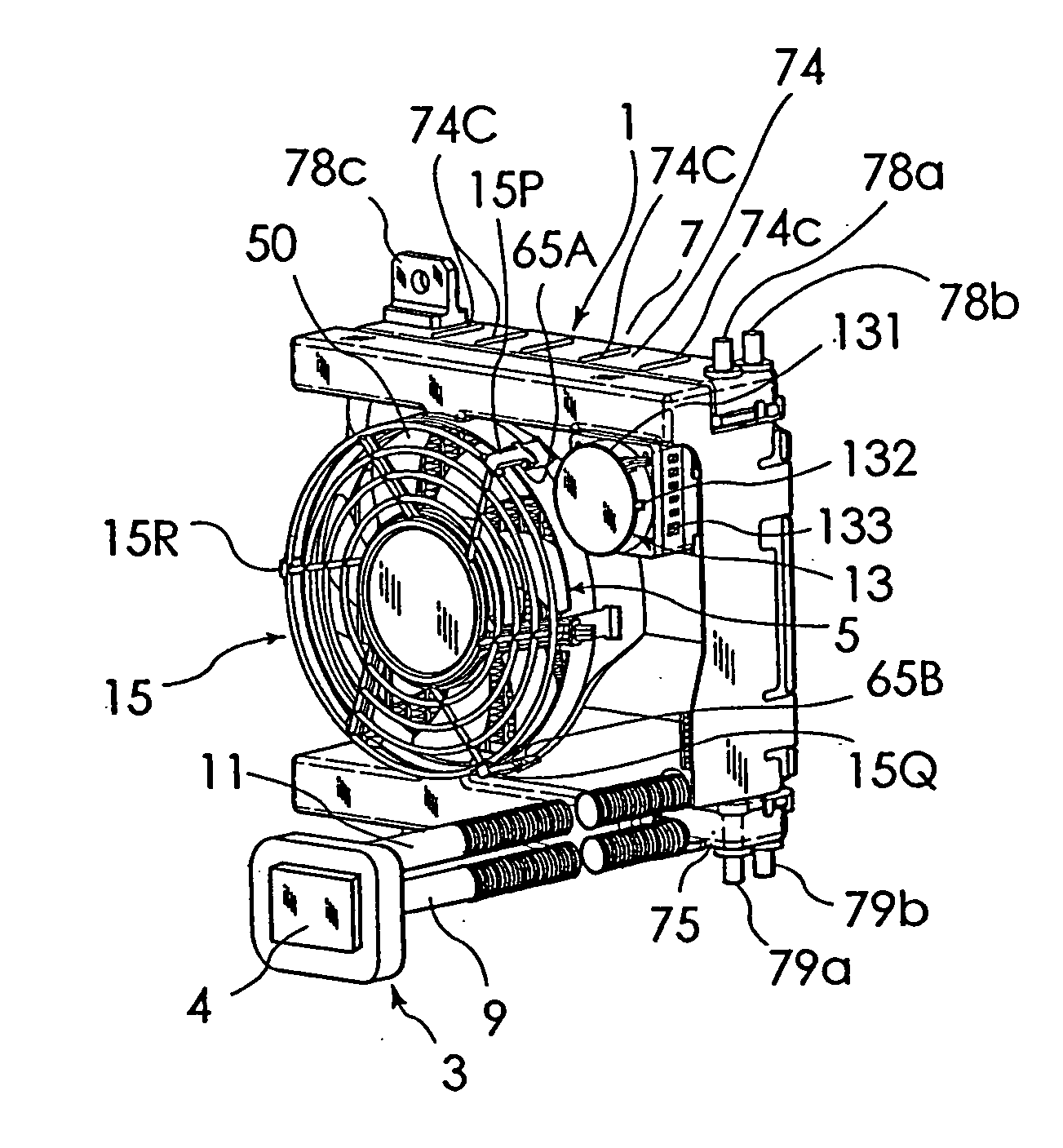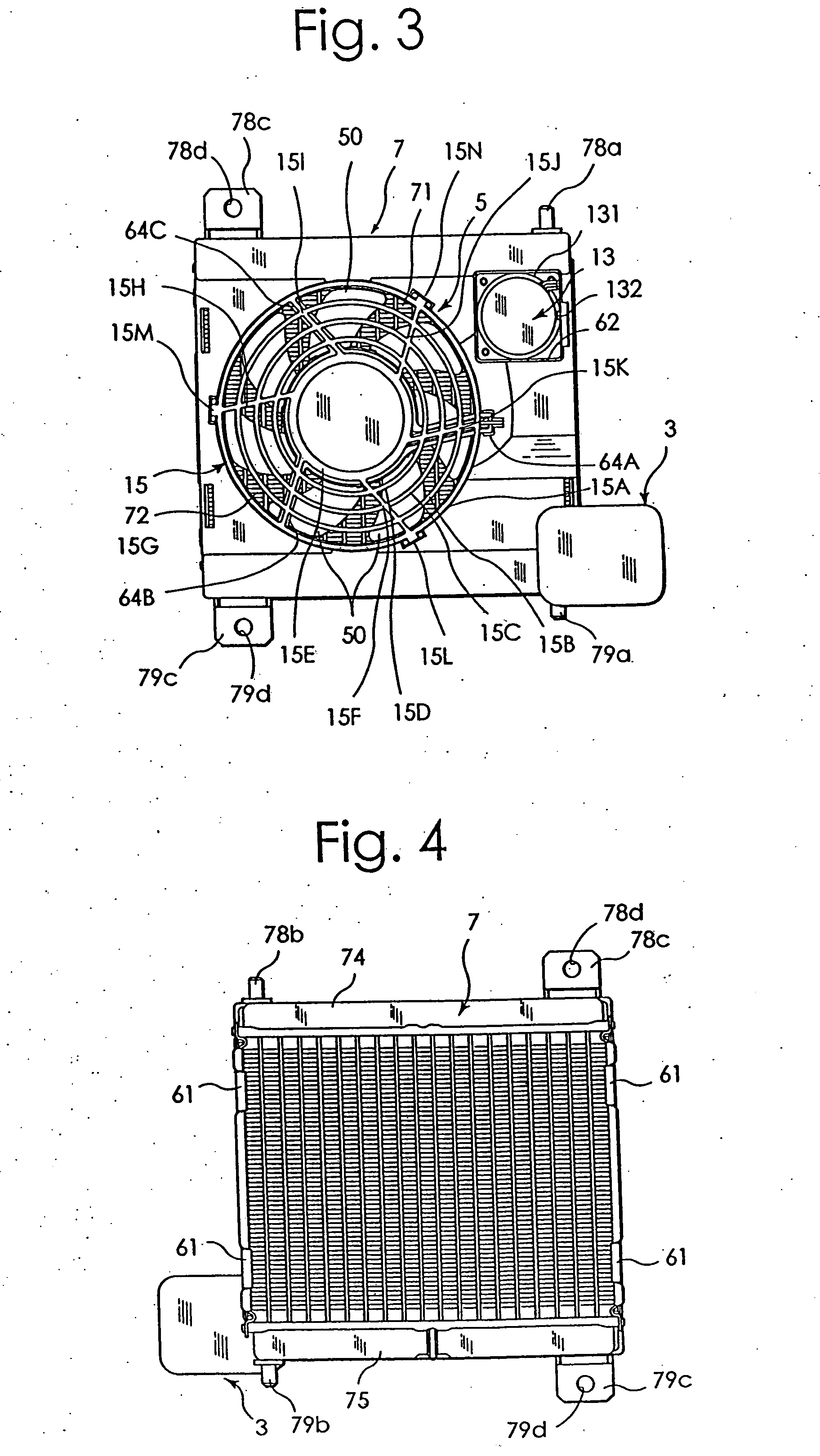Electronic component cooling apparatus
a technology of electronic components and cooling apparatuses, which is applied in the direction of domestic cooling apparatus, semiconductor/solid-state device details, instruments, etc., can solve the problems of undesirable cooling air flow of electric fans, and achieve the effects of reducing coolant leakage and evaporation, enhancing mechanical strength, and restricting the deformation of outer wall portions
- Summary
- Abstract
- Description
- Claims
- Application Information
AI Technical Summary
Benefits of technology
Problems solved by technology
Method used
Image
Examples
Embodiment Construction
[0085] One embodiment of an electronic component cooling apparatus according to this invention will be described in detail by referring to the accompanying drawings. FIG. 1 is a perspective view of one example embodiment of an electronic component cooling apparatus 1 according to this invention. FIG. 2 is a block diagram showing flow paths in this embodiment. FIG. 3 to FIG. 8 are a front view, a rear view, a right side view, a left side view, a plan view and a bottom view of this embodiment. FIG. 9A is a front view of an electric fan 5 and FIG. 9B is a rear view of the same. FIG. 11 and FIG. 12 are a front view and a right side view, respectively, of a radiator.
[0086] As shown in FIG. 1 to FIG. 8, this electronic component cooling apparatus 1 includes a water-cooled heat sink 3 having a coolant path therein; a radiator 7 cooled by the electric fan 5; and an electric pump 13 to apply a moving energy to a coolant to circulate the coolant between the heat sink 3 and the radiator 7. As...
PUM
 Login to View More
Login to View More Abstract
Description
Claims
Application Information
 Login to View More
Login to View More - R&D
- Intellectual Property
- Life Sciences
- Materials
- Tech Scout
- Unparalleled Data Quality
- Higher Quality Content
- 60% Fewer Hallucinations
Browse by: Latest US Patents, China's latest patents, Technical Efficacy Thesaurus, Application Domain, Technology Topic, Popular Technical Reports.
© 2025 PatSnap. All rights reserved.Legal|Privacy policy|Modern Slavery Act Transparency Statement|Sitemap|About US| Contact US: help@patsnap.com



